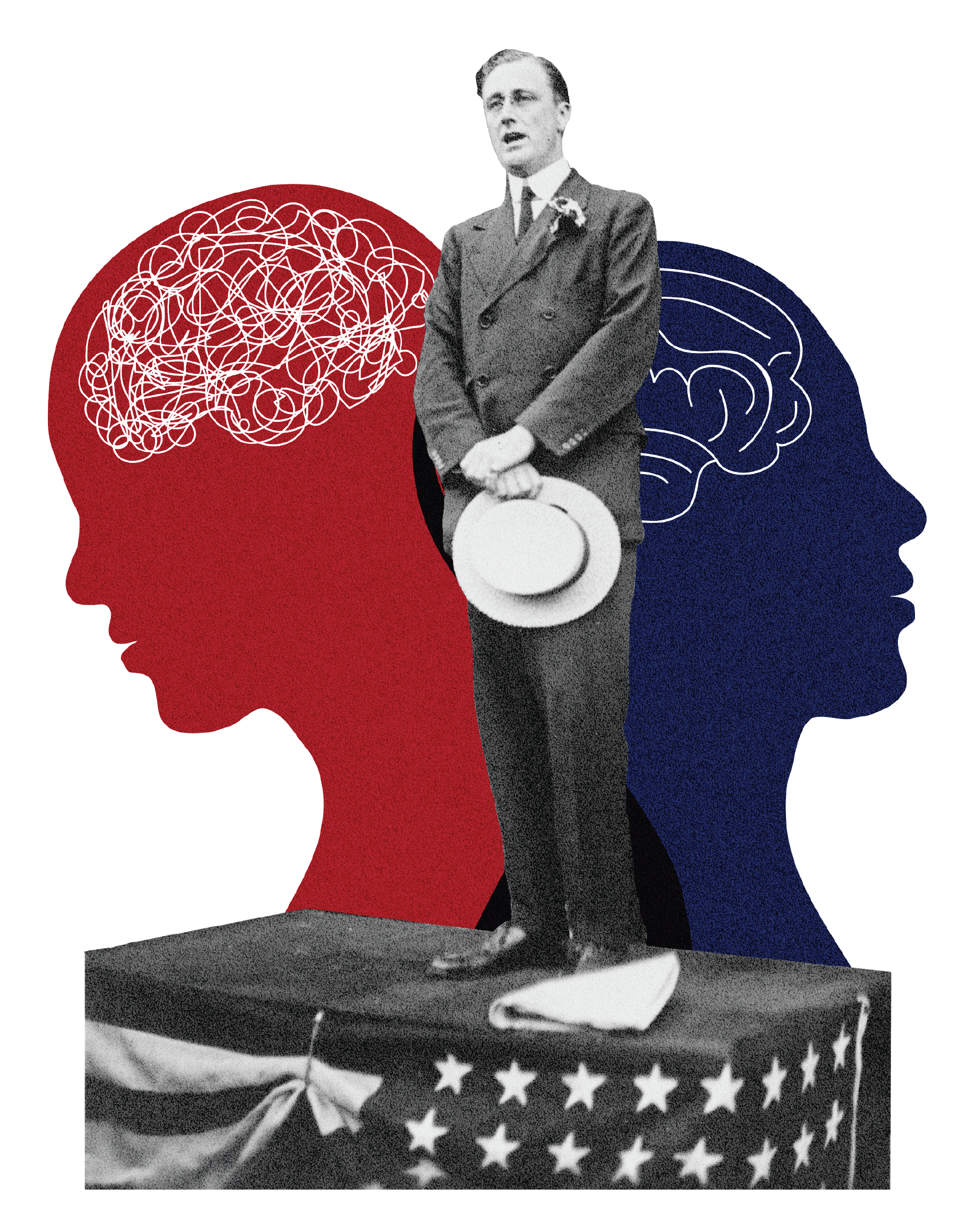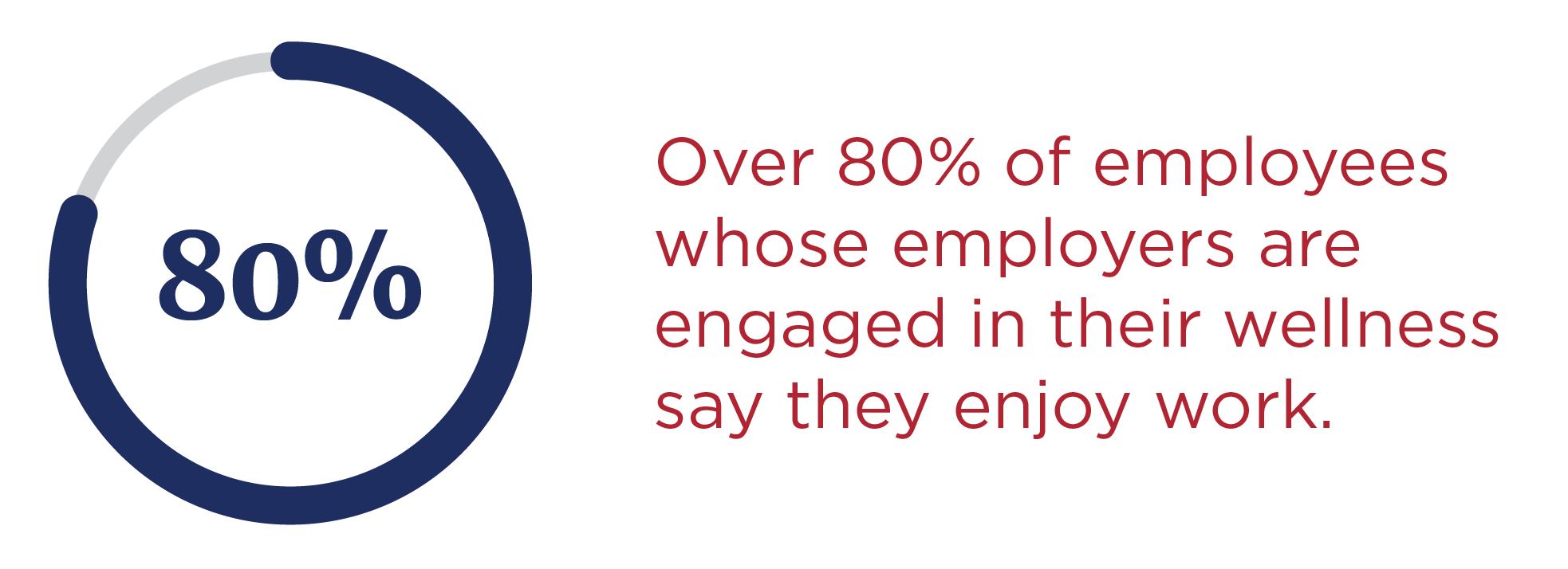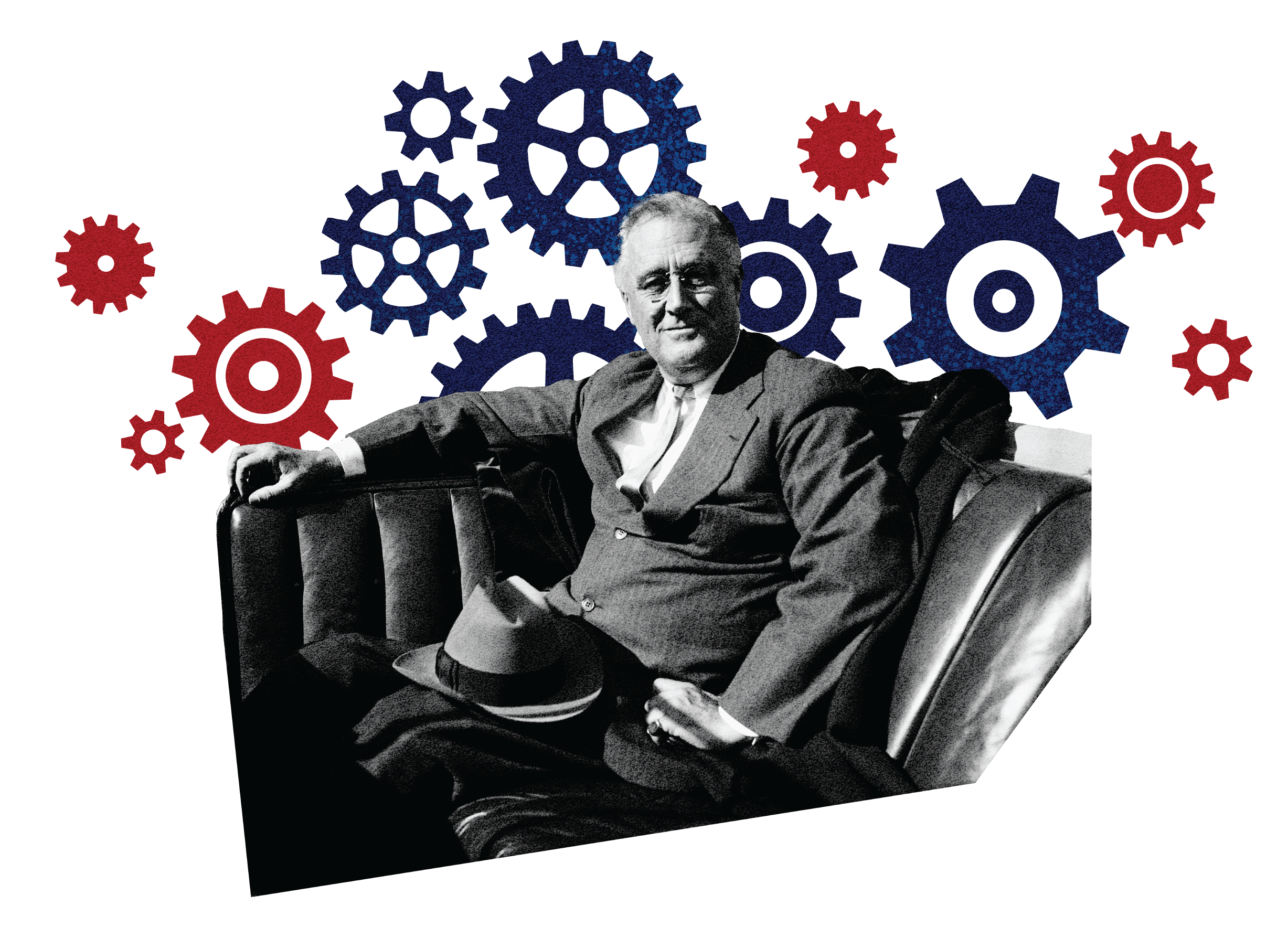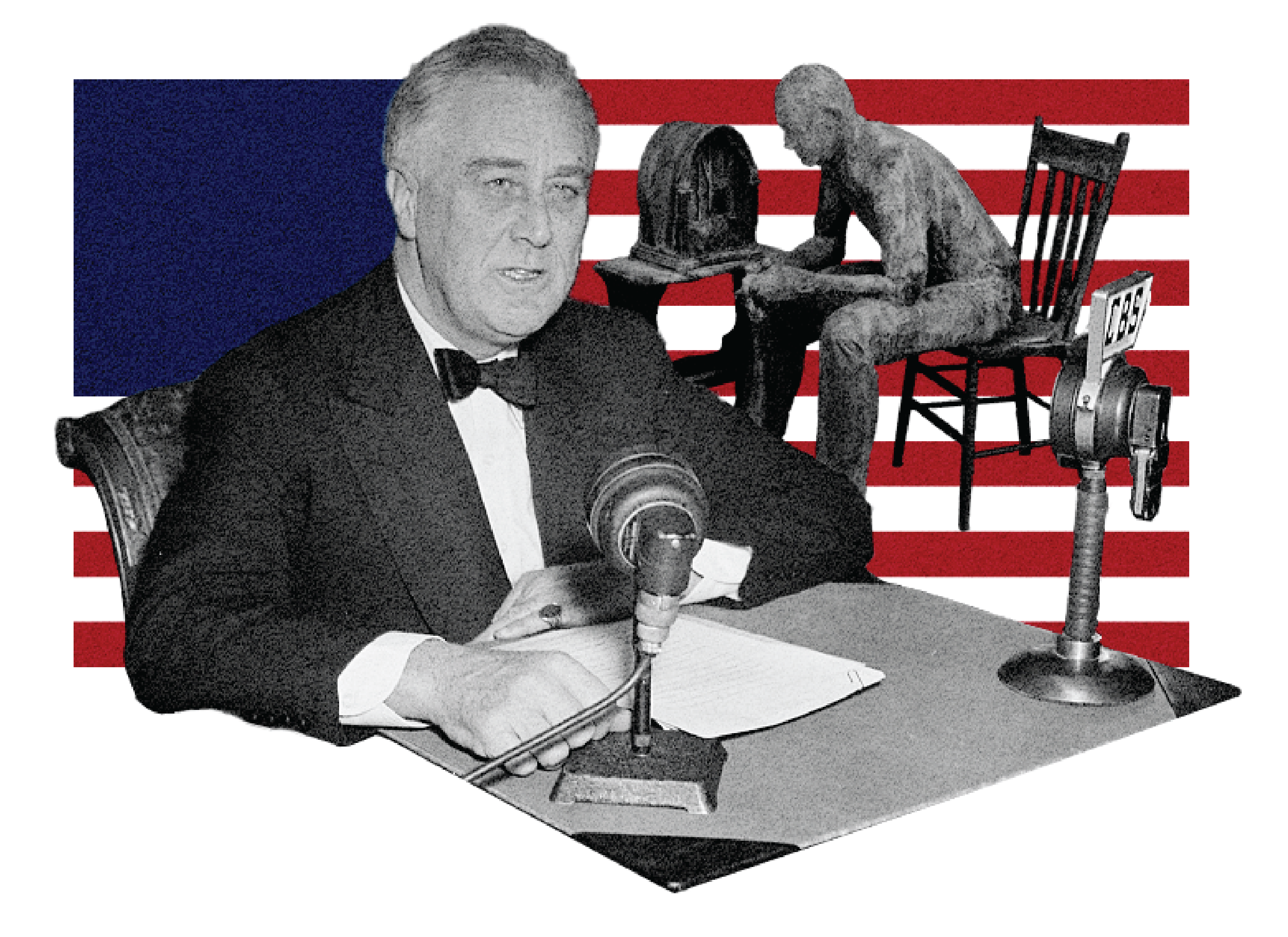With Commentary From: Brian Betkowski, Chris Reinking, and Nigel Zelcer
With the current election year for 2024, the idea of presidency, leadership, and engagement came to mind when thinking about article topics for The Jabian Journal Spring Edition. In our current socioeconomic climate, specifically Presidents who led the United States out of precarious times and catalyzed collective change and greater engagement came to the forefront. One of the primary figures who fits this mold is Franklin Delano Roosevelt (FDR), as he turned the tide in one of the gravest periods in American history.
The Great Depression stands as a testament to the resilience of the human spirit amidst economic adversity. The parallels between that era and today’s challenges, such as the recent global economic downturn triggered by the COVID-19 pandemic, are striking. During the Great Depression, individuals grappled with uncertainty, disengagement, and a sense of powerlessness, much like the current workforce navigating remote work setups and shifting personal priorities. History also offers hope — showcasing how effective leaders can inspire recovery and renewal in the face of adversity.
History serves as a treasure trove of lessons for modern-day challenges, offering insights that can shape our approach to leadership and management. An area in history that has forgotten some of its lessons is employee engagement, but they can still be recovered. Despite the pressures of time and competing priorities, exploring the leadership strategies of influential figures like Franklin Delano Roosevelt can yield valuable guidance for enhancing employee engagement in today’s business landscape. Some of the knowledge FDR’s legacy can impart on employee engagement is the importance of well-being, the value of relationships, and the unyielding need for connection; after all, employee engagement is simply that… connection. In this article, we delve into FDR’s principles during the Great Depression and examine how some contemporary business leaders have embraced similar strategies to promote employee satisfaction, productivity, and organizational success.

Well-Being: Connect with Your Employees’ Health… Support Can Make All the Difference
FDR’s leadership during the Great Depression went beyond economic policies; he recognized the importance of addressing the mental and psychological well-being of Americans. From a national perspective, strong mental and psychological health promotes enhanced productivity, economic growth, social cohesion, resilience to adversity, and improvements to many other domains. By implementing initiatives like the Works Progress Administration and the Social Security Act, FDR provided tangible support to give purpose, alleviate hardships, restore hope, and set the United States on a brighter path. The biggest takeaway from FDR’s well-being initiatives is that he put the health of his people at the center of his focus; hindsight unsurprisingly shows that the outcomes were astounding.
Business leaders may be looking to diffuse the same effects in today’s complex work environment as FDR did 80 years ago. A 2023 Zippia survey found that only 40% of employees whose employers are engaged in wellness say they enjoy work and 58% plan to stay at their current company. As a result, company leadership has prioritized employee well-being as a cornerstone of organizational success. The effects of this focus have been large. According to the same Zippia survey, over 80% of employees whose employers are engaged in their wellness say they enjoy work and 85% plan to stay at their current company. Levers business leaders are pulling to engage their employees’ well-being can be wide-ranging and dynamic. For example, companies such as Google and Salesforce have invested in comprehensive wellness programs, mental health resources, and flexible work arrangements to support their employees’ holistic well-being. By fostering a culture of care and support, these leaders demonstrate a commitment to employee engagement and performance. Through prioritizing employee well-being, leaders forge deeper connections with their teams, creating an environment where mutual respect and understanding drive collective success, echoing the enduring legacy of FDR’s people-first approach in today’s dynamic work environments.

Navigating the complexities of professional life, individuals seek fulfillment in their work and personal well-being, balancing the demands of their careers with their outside interests. The support provided by their companies, through wellness programs and flexible work arrangements, not only acknowledges their efforts but also enhances their overall quality of life, fostering a profound sense of engagement and motivation. This ethos of holistic care, which prioritizes the well-being of employees at every stage of their careers, inspires a culture of exceptional dedication and performance.
Chris Reinking: Leader Perspective on Well-Being in Employee Engagement
In my leadership journey, I have come to embrace the holistic concept of well-being, recognizing its deeply individualistic nature and the wide variance in what it means for each person. This understanding has underscored the value of full-life integration, where blending professional and personal lives not only enhances overall well-being but also performance. By fostering an empowering environment, we enable individuals to make well-being a priority, recognizing it as the cornerstone of both personal fulfillment and professional excellence. Privileged to work with highly motivated and driven colleagues, I have seen firsthand how surrounding ourselves with good people and positive experiences cultivates confidence, which is crucial for well-being and effective performance. The increased emphasis toward mental health initiatives within our organization reflects our commitment to this comprehensive approach, acknowledging the diverse well-being needs of our team. Despite the complexities that larger companies face, well-being remains a priority, understanding that the challenges of scale demand even more dedication to fostering an environment where everyone feels valued and supported. Leading by example, I aim to diffuse the importance of making well-being a priority for all colleagues, demonstrating through my actions that well-being is fundamental, regardless of our organization’s size. It is about championing the uniqueness of each individual’s journey toward well-being and ensuring that our workplace is a space where professional and personal lives are harmoniously integrated, supporting and uplifting every member of our organization.

Security: Balance Transparency with Your Vision… People Tend to Follow It
To address well-being and lay the roadmap to remedy its root causes was one of the first steps President Roosevelt took to address the nation’s hardships. Furthermore, sharing the roadmap, spurring collaboration, and enabling contribution engaged American citizens on an unprecedented scale: unemployment fell to just 3.2% in his first year as more people increasingly rose to the American cause. FDR’s First 100 Days exemplified transparent leadership, as he meticulously planned and communicated initiatives to address national crises. By sharing his vision with the American people, he instilled confidence and rallied support for his programs. It would be fair to say that business leaders want the same effects of confidence and support for their vision.
A recent Gallup poll found that “only 23% of US employees strongly agree that they trust the leadership of their organization.” In today’s business landscape, transparency remains a powerful tool for building trust and engagement among employees. Business leaders such as Satya Nadella of Microsoft and Tim Cook of Apple have championed transparent communication and inclusive decision-making processes within their organizations. Through initiatives like regular town hall meetings, open-door policies, and employee feedback mechanisms, these leaders empower their teams to contribute ideas, voice concerns, and align with organizational goals. By fostering a culture of transparency and accountability, they cultivate a sense of ownership and commitment among employees, driving organizational success. The same Gallup poll also states, “When leaders communicate clearly, lead and support change, and inspire confidence in the future, 95% of employees say they fully trust their leaders.” Leaders not only fortify the bonds of trust with their employees when embracing transparency but also co-create a shared vision for success, turning every conversation into a steppingstone toward achieving collective goals in an atmosphere of mutual respect and collaboration.
In uncertain roles, explaining tasks’ value and providing feedback significantly enhances employee engagement over simple task assignment. This approach empowers employees to deliver superior results and fosters personal and professional growth, building trust between employees and leaders. Such investment in transparency and development is universally valued, leading to a deeper appreciation and a more committed workforce.

Brian Betkowski: Leader Perspective on Security in Employee Engagement
In the spirit of presidential wisdom, JFK’s iconic challenge, “Ask not what your country can do for you, ask what you can do for your country,” reflects our transparency ethos that is deeply intertwined with our belief in the critical role of self-starters and go-getters within our organization. These individuals, who take initiative and eagerly pursue our collective goals, are the backbone of our success. By fostering an environment of balanced transparency, we not only make our objectives clear but also build a foundation of trust, showing our confidence in every employee’s ability to contribute meaningfully to our mission. This was poignantly illustrated during JFK’s 1962 visit to NASA, where a range of employees, from engineers to architects, shared their personal objectives. Even the janitor was clearly aligned with NASA’s lunar mission. When he was approached by JFK with “Hi, I’m Jack Kennedy, what are you doing?” he proudly stated, “I’m helping put a man on the moon, Mr. President.” This anecdote underscores the importance of aligning personal ambition with the organization’s broader mission, demonstrating how self-starters and go-getters at all levels can feel deeply engaged and valued. Their mindset and approach to work embody the very essence of our mission, illustrating that when everyone, regardless of their role, is aligned with high-level, holistic goals, they not only contribute to but also share in the success of achieving something greater than themselves. It is this balance — between clear, ambitious objectives and the empowerment of every team member to take initiative — that ensures our vision becomes a unifying force for all, propelling us forward with shared purpose and unwavering dedication.

Relationships: Provide Avenues for Connection… Technology Gives Immense Opportunities
FDR’s innovative use of the radio during his Fireside Chats revolutionized communication, enabling him to connect with citizens and foster engagement during a time of crisis. In today’s digital age, technology continues to play a pivotal role in fostering connections and collaboration within organizations. Business leaders, including Jeff Bezos of Amazon and Mark Zuckerberg of Facebook, have leveraged technology platforms to facilitate communication, teamwork, and employee engagement. Through tools like Slack, Zoom, and Workplace by Facebook, these leaders create virtual spaces for employees to connect, share ideas, and collaborate on projects irrespective of geographical barriers. By embracing technology as a catalyst for connection and community-building, they foster a culture of collaboration, innovation, and engagement within their organizations.
At Jabian Consulting, our business leaders conduct a Town Hall meeting each month leveraging Teams. It provides our workforce the opportunity to connect with our leadership, understand firm actions, and align with our teams across Charlotte, Dallas, Atlanta, Chicago, and other offices without compromising personal schedules and life commitments. Additionally, the time saved from conducting virtual meetings, when necessary, allows us to connect with teams and other members of our workforce. These connections can be seen in the form of feedback sessions, happy hours, career development tutoring, networking opportunities, and many others. The value proposition of Microsoft Teams is not that it saves us time… the value proposition is that it gives us time to do more. When dealing with uncertain and precarious times, it is paramount that business leaders leverage technology to its full potential to realize broader connections and empower teams to connect in new ways.
In FDR’s first Fireside Chat on March 12th, 1933, he concluded with, “Let us unite in banishing fear. Together we cannot fail.” Business leaders should take note as when technology is used correctly and effectively, it can catalyze incredible thinking, innovation, and collaboration.
Nigel Zelcer: Leader Perspective on Relationships in Employee Engagement
Throughout the last several years, the use and need for collaboration tools, exemplified by platforms such as Microsoft Teams and Slack, has evolved from intermittent use to vital importance and now to a more nebulous phase of understanding how these tools genuinely enable leaders, employees, and teams. In an era of shifting digital paradigms, platforms like Microsoft Teams have become cornerstones for connecting across distances, breaking down geographical barriers to foster a seamless journey between virtual and face-to-face connections. They create vibrant collaborative environments through channels, chats, posts, and virtual meetings, enabling continuous engagement and inclusivity. However, the tangible benefits of in-person interactions, such as whiteboarding, brainstorming sessions, and team-building activities, often drive more profound efficiency and creativity by offering real, spontaneous opportunities for deeper connection. These face-to-face engagements provide irreplaceable moments for bonding with peers, clients, and mentors, fostering relationships that can sometimes feel constrained in a virtual setting. Within a Servant Leadership Environment, tools like Microsoft Teams support leaders in empowering their teams, enhancing their ability to excel, grow, and innovate. By integrating the efficiency of such collaboration platforms with the authenticity of direct interactions, leaders can cultivate a balanced ecosystem where technology enhances rather than replaces the richness of personal connections. This approach promotes a culture where both virtual and physical engagements are valued for their unique contributions to professional and personal growth, ensuring a cohesive and inclusive workspace that values the human element just as much as technological advancements.
Conclusion
In the intricate landscape of today’s business environment, the enduring legacy of President Roosevelt illuminates the path for enhancing employee engagement and propelling organizational success. Central to this journey is the understanding that at the core of employee engagement lies the powerful principle of connection. By prioritizing employee well-being, championing transparent communication, and harnessing technology to deepen relationships, leaders can cultivate a workplace where employees not only feel valued and supported but are also empowered to deliver their finest contributions. The practices adopted by leading corporations like Google, Microsoft, Amazon, Salesforce, and Apple showcase the real-world application of these principles, serving as beacons of resilience, innovation, and unified effort. In today’s leadership quest, it becomes crucial to revisit and harness the historical wisdom of figures like Roosevelt, integrating strategies that underscore the importance of connection in fostering a vibrant, engaged workforce and securing organizational resilience and enduring achievement.
To truly measure if an organization is on the right track, leaders should continually assess their efforts by asking:
- Is employee well-being a central focus?
- Is there a commitment to fostering an environment of balanced transparency and collaborative engagement?
- Are technological avenues being utilized to facilitate effective communication and enrich personal interactions?
Answering ‘yes’ to these questions signals a company’s alignment with the principles FDR championed nearly a century ago, highlighting a commitment to fostering deep, meaningful connections. Such an environment is where genuine engagement thrives, proving that the essence of motivating a workforce and driving organizational success is, indeed, about nurturing profound connections at every level. After all, employee engagement is simply about one thing… connection.
